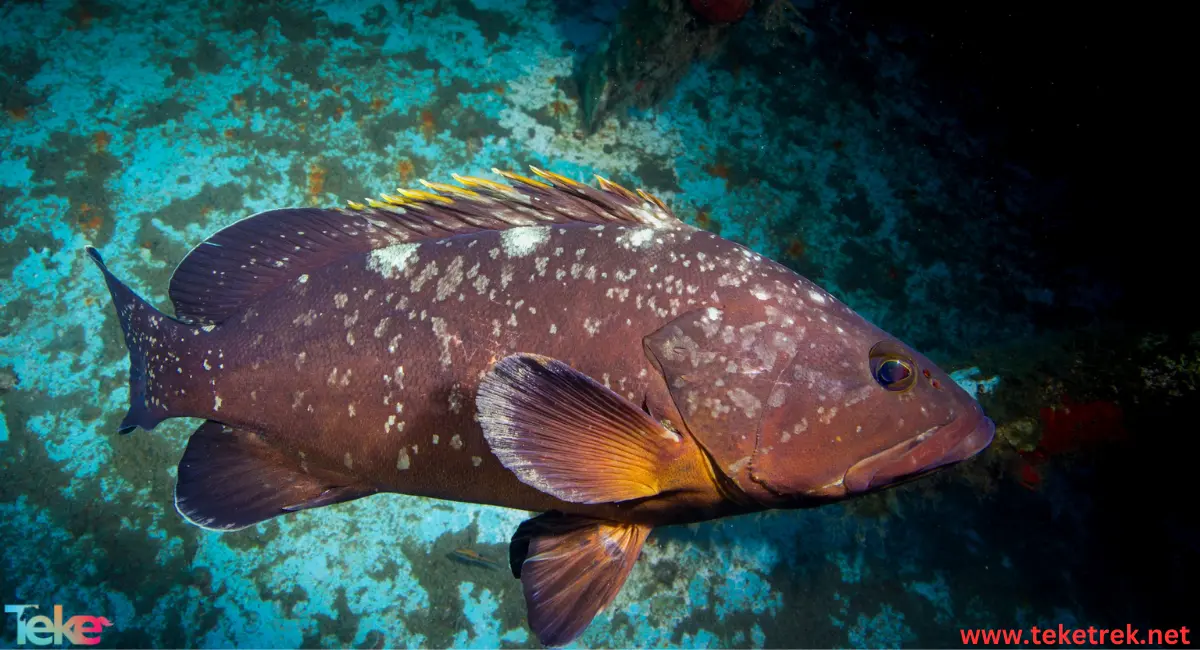Guitarfish, also known as shovelnose rays, are fish with a peculiar body that resembles a guitar and at the same time, they resemble sharks.
Recently, people have started fishing for guitarfish and using them as a food source, especially in the western Pacific Ocean, although only their fins are consumed.**
Let’s learn more about it from teketrek.

Habitats of Guitarfish:
Guitarfish or shovelnose rays are aquatic animals found in the northeastern Pacific Ocean along subtropical to temperate latitudes.
Guitarfish prefer to live on the ocean floor, settling on soft sandy or muddy bottoms, often near rocky reefs.
Characteristics of Guitarfish:
Guitarfish belong to the order Rajiformes, family Rhinobatidae, phylum Chordata, subphylum Vertebrata, class Chondrichthyes.
Guitarfish are relatively small-sized ray-finned fish, with typical pectoral fins resembling wings, and their bodies resemble that of a shark.
Guitarfish do not have spines or needles like some similar species and are harmless to humans.
An adult guitarfish can reach a length of about 3 meters, with a maximum weight of around 135 kilograms.
The bowmouth guitarfish has a distinctive shape that resembles a hybrid between a shark and a ray, but in reality, it belongs to the ray family.
The front part of the bowmouth guitarfish’s body is flattened and wide, while the rest of its body and large dorsal fins create an appearance similar to a shark.
The tail of the guitarfish is longer than its body, and the pectoral fins are large.
Guitarfish are characterized by a grayish-brown color with white spots on the dorsal fins.
These fish have the ability to pump water over their gills, so they can remain completely motionless.
Diet of Guitarfish:
Since the guitarfish is associated with the seabed, most of its prey also lives on the bottom.
Guitarfish are carnivorous, eating a variety of bottom-dwelling fish and invertebrates, especially decapods such as shrimp and crabs.
Large coastal sharks or even California sea lions are lone predators called shovel-nosed guitarfish.
Reproductive Stages of Guitarfish:
Like all sharks and rays, this species reproduces through internal fertilization.
Each embryo receives nutrition from the yolk sac, and females give birth to live, developed young.
After birth, the young receive no further parental care and are ready to start a predatory lifestyle.
The shovelnose guitarfish was initially thought to be a shark by early scientists.
Later, it was believed to be an intermediary between sharks and rays. However, recent studies have confirmed that guitarfish are rays and are most closely related to the diverse group of stingrays.
Facts About Guitarfish:
Here we will present a set of interesting information and facts about guitarfish.
Guitarfish or shovelnose rays are relatively harmless, although they are related to sharks and somewhat resemble them, they rarely attack humans. If they do, their sharp teeth cause little or no damage.
Although guitarfish have more than 100 teeth in their mouths, these teeth are designed for grinding hard shells, so they are short and not very sharp.
Guitarfish are very ancient creatures.
The shovelnose guitarfish belongs to a very ancient group of fish that has changed little over millions of years.
The genus of this type of fish includes 15 species of guitar fish around the world.
All guitarfish have similar habitat preferences and appearances, with large flat heads, small wings, and long tails.
Some guitarfish can reach a length of 3 meters, while others are less than one meter long.
Female guitarfish are ovoviviparous like all rays and sharks, with females reproducing by retaining fertilized eggs inside their bodies until the offspring are ready to hatch and are released from the mother’s body.
Guitarfish meat is considered a delicacy.
Previously, guitarfish were considered incidental catch species not worth fishing or selling, but now guitarfish are actively fished as their meat has become more marketable and valuable.
Along the coast of California, they are often cooked and sold with chips, providing a valuable source of income for fishermen.
The meat of the guitarfish tail is light in flavor, clean, and delicious, and since these animals are found in shallow waters, catching them is not considered difficult.
Guitarfish do not need to rely on sight to find prey.
To detect potential prey, the guitarfish has special sensory organs in its nose that enable it to detect changes in water pressure around it.
Guitarfish also have electrical receptors on the underside of their long noses, which help them detect prey buried under sand or mud.
Guitarfish do not need to keep swimming to breathe.
Unlike other species, the shovelnose guitarfish pumps water through its gills to provide the oxygen it needs.
It is worth noting that the numbers of guitarfish are declining due to repeated fishing, and scientists now believe that this species is almost threatened with extinction.

Frequently Asked Questions About Guitarfish:
- Can guitarfish be eaten?
Yes, people in some areas have started eating these fish, and their tail meat is considered light in flavor, clean, and delicious.
- Where can guitarfish be found?
Guitarfish can be obtained from the bottom of the Pacific Ocean.
- Are guitarfish dangerous?
They rarely attack humans. If they do, their sharp teeth cause little or no damage.
- How does guitarfish determine its prey?
Guitarfish also have electrical receptors on the underside of their long noses, which help them detect prey buried under sand or mud.
- Are guitarfish threatened with extinction?
The numbers of guitarfish are declining due to repeated fishing, and scientists now believe that this species is almost threatened with extinction.
In conclusion.
guitarfish are unique marine creatures that have high nutritional value and contribute to the diversity of marine life. These fish play an important role in the marine ecosystem by being an essential part of the food chain. In addition, guitarfish are an important economic resource in many countries, where they are fished and marketed in large quantities. Ultimately, preserving the sustainability of guitarfish is essential to ensure the balance of marine environments and their continued benefit for future generations.
المصادر:





